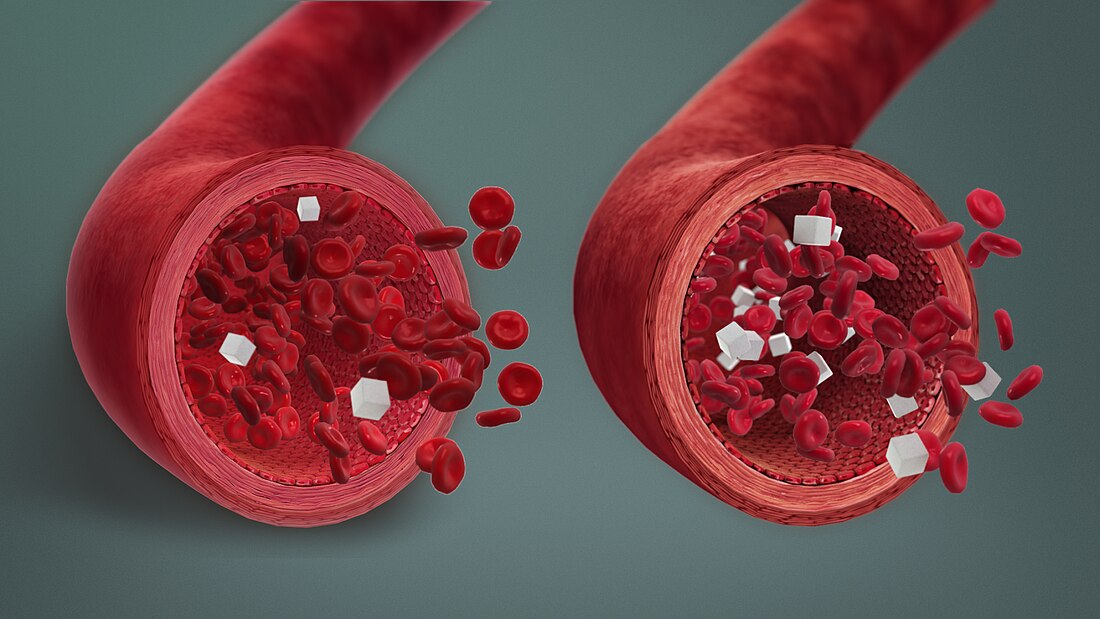Hypoglycemia
low blood sugar From Wikipedia, the free encyclopedia
Remove ads
Hypoglycemia is when the level of blood sugar is lower than normal. A normal blood sugar level is about 70 to 100 milligrams per deciliter.
This article or section may require reorganising to meet Wikipedia's quality standards. (April 2025) |
This page or section needs to be cleaned up. (April 2025) |
All of the cells in the body need sugar to do their jobs and to survive. When a person does not have enough blood sugar, their body cannot work normally.
Hypoglycemia can cause many symptoms. Some common symptoms are:
- nausea
- feeling hungry
- sweating
- feeling sad
- feeling the heart pounding (heart palpitations)
Bad hypoglycemia can make a person act like they are drunk or have taken drugs. Very bad hypoglycemia can look like a stroke. Very bad (severe) hypoglycemia can cause serious medical problems (like seizures) or even death if it is not treated quickly enough.
Hypoglycemia can happen to anyone, at any age, but it usually happens in people who are diabetic. It is often a complication of treatment for diabetes with insulin or oral medications. The brain and other parts of the body cannot work without sugar.
Hypoglycemia is treated by raising the blood sugar levels back to normal. Often, a hypoglycemic person can bring their blood sugar levels back up by eating. In the worst cases, when the blood sugar is very low, hypoglycemia is treated by giving sugar water intravenously. In some cases, the liver is able to handle the issue by making glucose.[7][8]
Remove ads
References
Wikiwand - on
Seamless Wikipedia browsing. On steroids.
Remove ads

